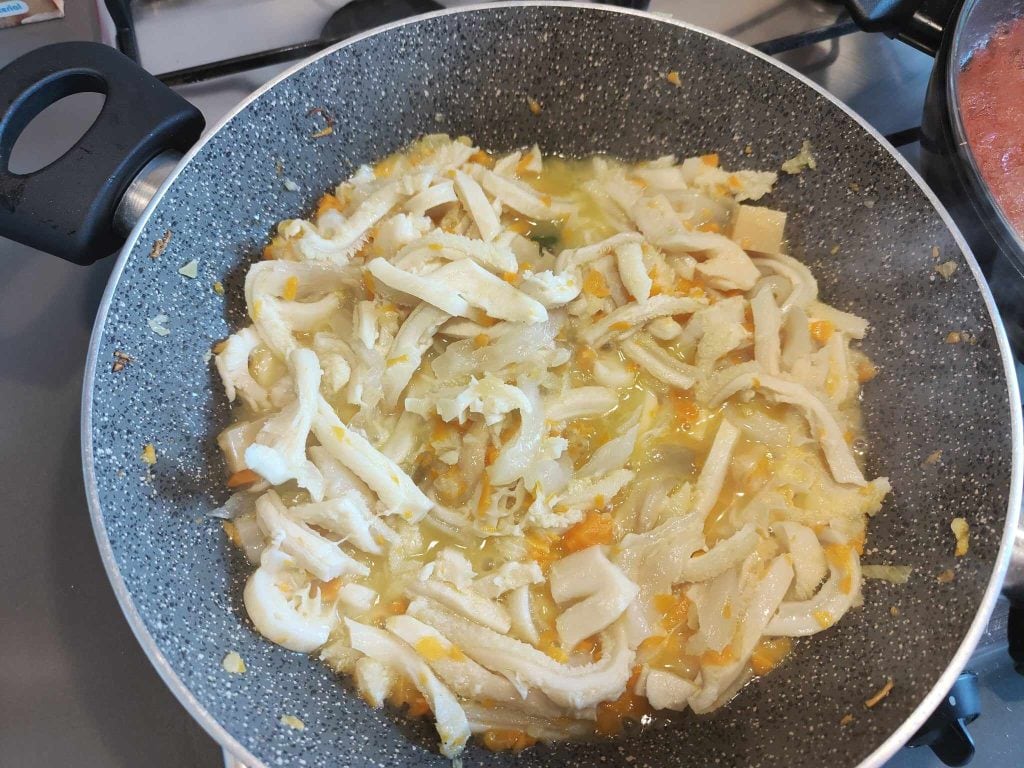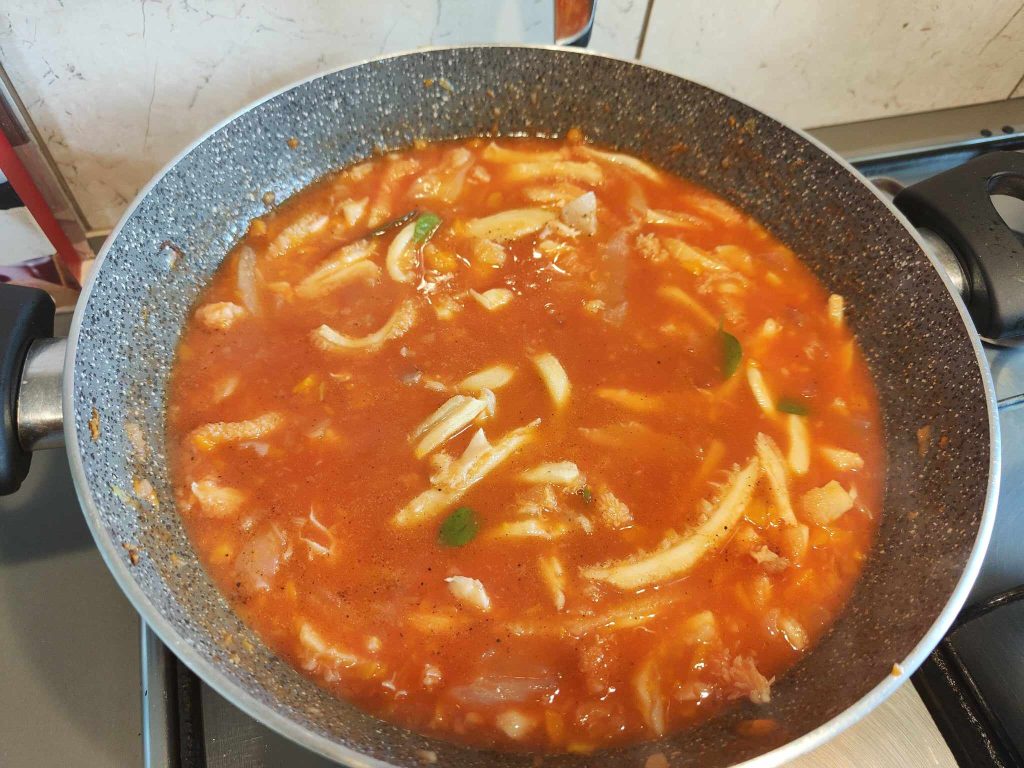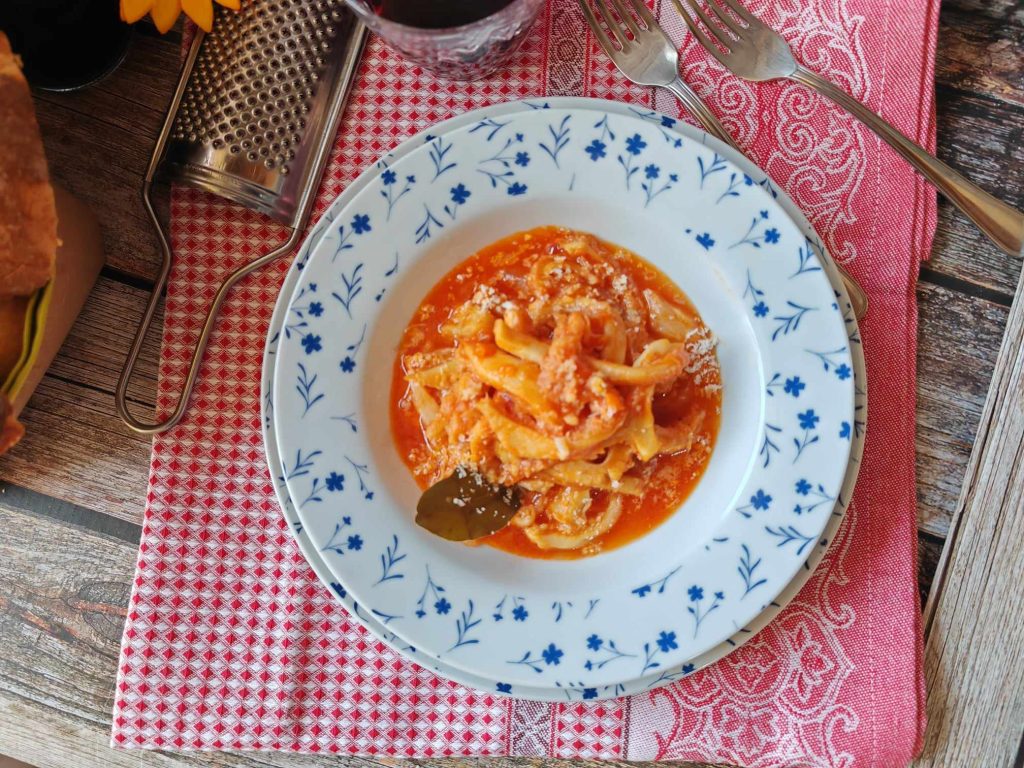Roman-style Tripe. Rustic, flavorful, and rich in seasoning, a true delight that will have you mopping up sauce with bread at the end of the meal.
A traditional recipe that brings taste, warmth, and good cheer to the table. An ideal dish for the cold season, requiring its time to prepare, but not at all complicated to make.
It is the celebration of humble cuisine, the kind that luckily never goes out of style.
The Roman-style Tripe recipe is a bit time-consuming, but don’t worry, this doesn’t mean it’s difficult. Follow me step by step throughout the preparation and you’ll see that everything will turn out to be really easy.
You just need to pay attention during cooking so that it doesn’t dry out too much, but you’ll see that all these small precautions will make the difference.
The ingredients that characterize Roman-style tripe are Pecorino Romano cheese and mint.
Roman and Lazio tradition in general requires these two ingredients to be added at the early stages of cooking the tripe. Since today cooking is pure innovation, we can add these two ingredients at the end of the preparation.
In my house, whenever I cook it, I always make a little extra for the always demanded seconds.
Roman-style tripe is a comfort food to be served piping hot, accompanied by a nice slice of rustic bread.

- Difficulty: Very Easy
- Cost: Very Economical
- Preparation time: 15 Minutes
- Portions: 4/6
- Cooking methods: Stovetop
- Cuisine: Italian
- Seasonality: Autumn, Winter, and Spring
Ingredients for Roman-style Tripe
- 2.2 lbs beef tripe (mixed)
- 1.5 cups tomato purée (or peeled tomatoes)
- Half chili pepper (optional)
- Half celery (stalk)
- carrot (1)
- 1 onion
- 3.4 fl oz dry white wine
- 1 clove garlic
- 3.5 oz Pecorino Romano cheese
- to taste mint
- salt
- to taste extra virgin olive oil
- pepper
Tools
- Casserole
- Lid
- Cutting Board
- Knife
- Wooden Spoons
Steps for Roman-style Tripe
Slice the chili pepper lengthwise and remove the seeds.
Peel the garlic. In a wide-bottomed pot, add the olive oil and sauté the chili pepper and garlic.
(Leave the garlic whole so it can be removed once golden brown). (If you don’t like chili, you can skip it and adjust with pepper instead).
Meanwhile, peel and chop the onion, celery, and carrots; add the vegetables to the garlic mixture and sauté for a few minutes over medium heat.
Cut the tripe into strips about 0.4 inches wide and 2 inches long; when the vegetables are well sautéed, add the tripe and raise the heat.
Cook until all the water released by the tripe evaporates completely.

Deglaze with the white wine, let it evaporate, and add the tomato purée; adjust with salt.
(Be cautious with the salt).
(I used purée but peeled tomatoes work as well).
Cook on low heat, covered, for at least 1 hour, checking and stirring occasionally to prevent sticking to the bottom.
If necessary, add a bit of water just to finish cooking the tripe

Once the tripe is tender, remove the lid and let the sauce thicken well.
Turn off the heat, add the mint torn by hand, and grated Pecorino Romano cheese, then mix and adjust with salt and pepper if needed.
Serve the Roman-style tripe accompanied by nice slices of bread and extra grated Pecorino.

Enjoy your meal.

Advice
I used purée, but if you prefer, you can crush the peeled tomatoes by hand in a separate bowl and then add them to the tripe.
Tripe is a very rich dish nutritionally, high in protein and low in fat.
If you like even more intense flavors, you can add 3.5 oz of pancetta or guanciale to the sauté.
If you liked this recipe, click on many stars, thanks a million.
Join my group: https://www.facebook.com/groups/488624465780860
or on my page: https://www.facebook.com/gustoamoreefantasie
FAQ
What if I don’t have white wine?
You can substitute white wine with red wine: it will make the final result richer and more colorful.
Why do I find it hard to digest?
It’s important to remember that its poor digestibility is often due to the abundance of seasoning and spices usually used to prepare it.
Which tripe do you recommend?
The original recipe of the Roman variant calls for veal tripe instead of beef tripe.

